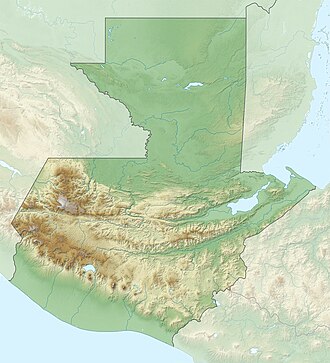| Cuilapa-Barbarena | |
|---|---|
 | |
| Highest point | |
| Elevation | 1,454 m (4,770 ft) [1] |
| Coordinates | 14°33′N90°4′W / 14.550°N 90.067°W |
| Geography | |
| Geology | |
| Last eruption | Unknown, possibly Holocene [1] |
The Cuilapa-Barbarena volcanic field is a field of cinder cones in Guatemala with approximately 70 cones. At an elevation of 1,454 m (4,770 ft), the field is located over the intersection of the local Jalpatagua fault with the Miocene Santa Rosa de Lima caldera. The youngest cones postdate the last activity phase of Tecuamburro and may be of Holocene age, [1] but with no confirmed evidence. [2]

